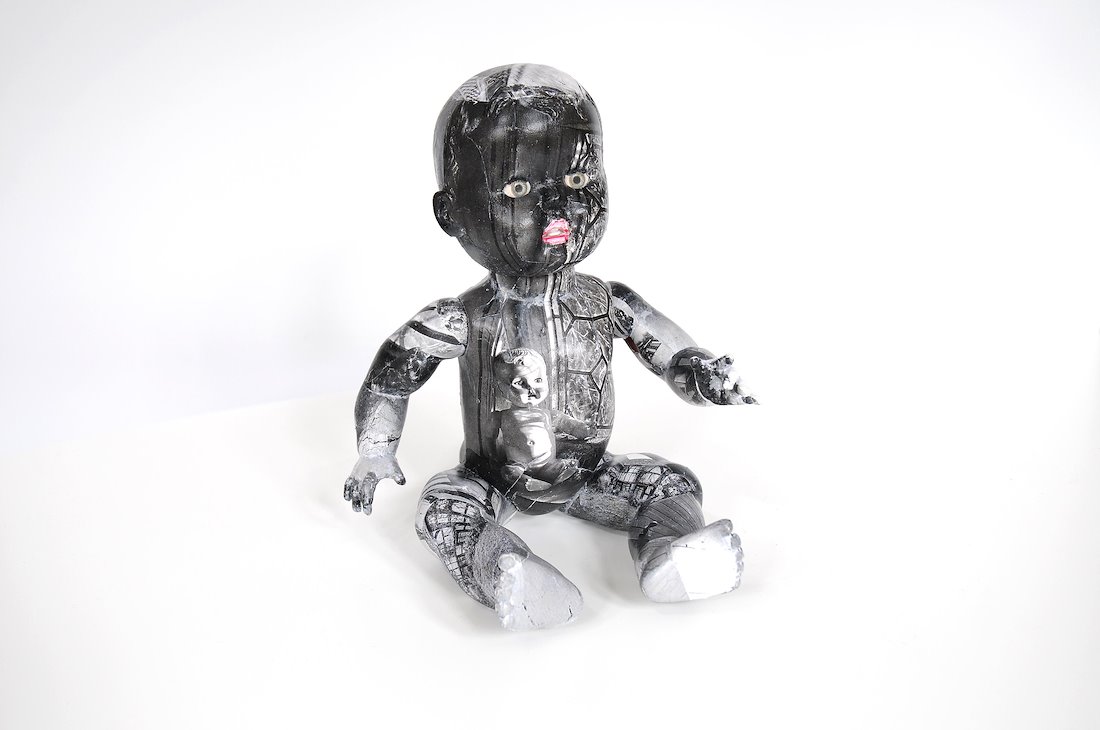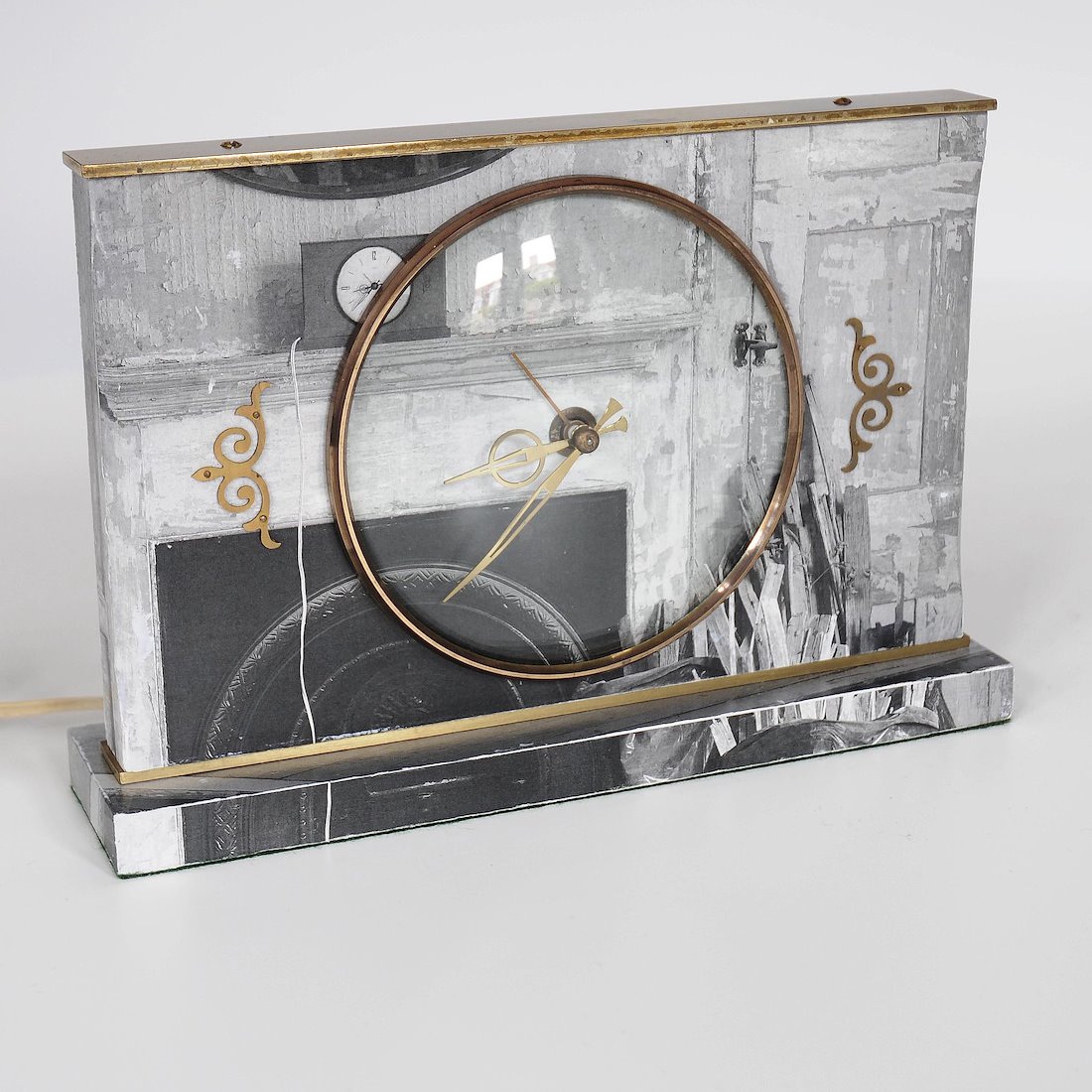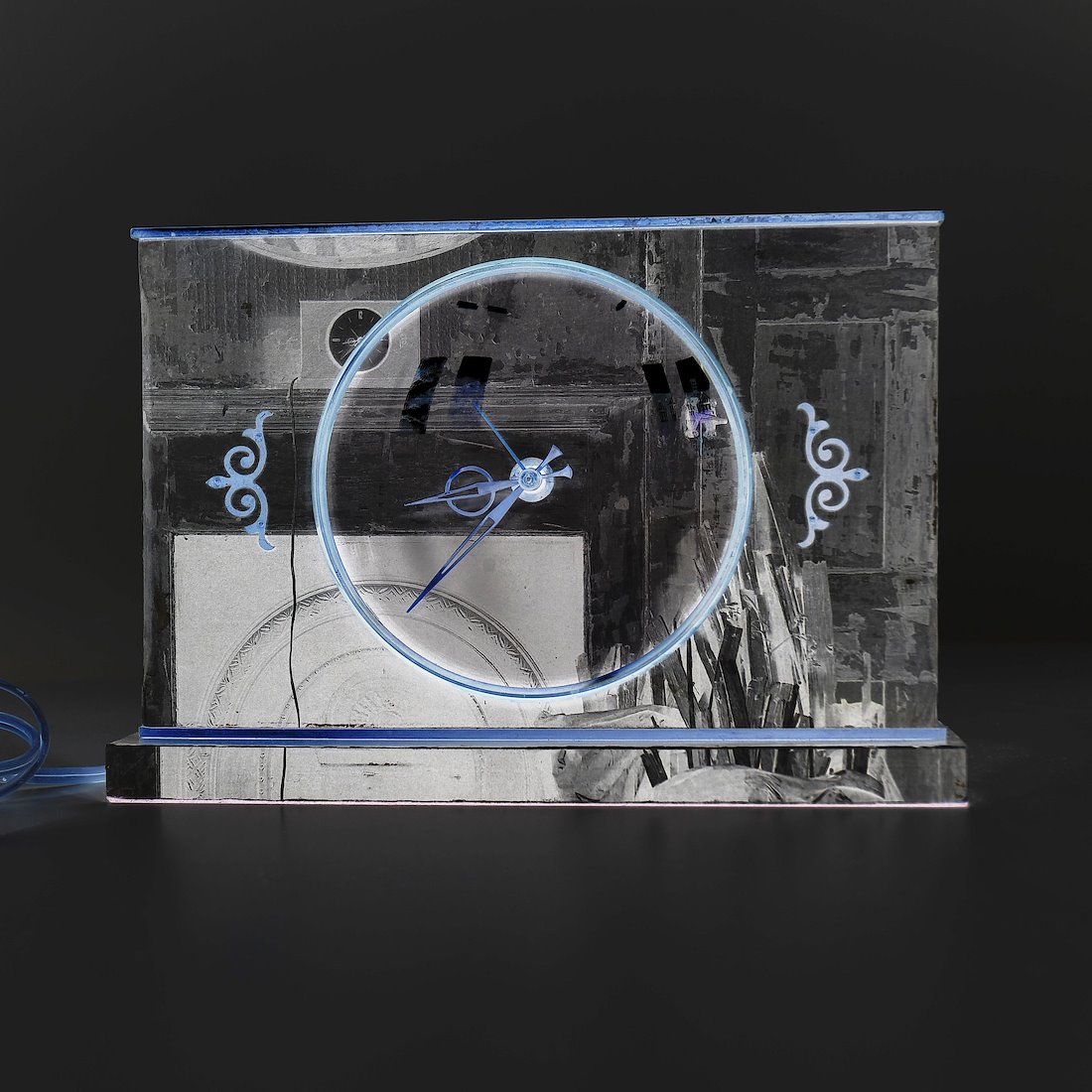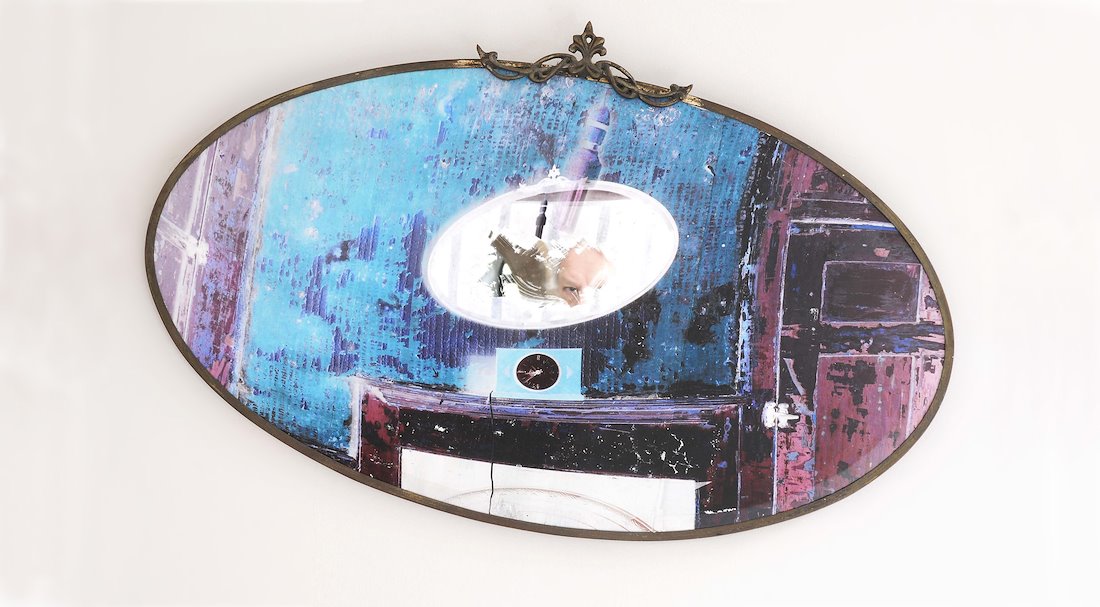
'RECOVERED' Trashed Infant School, Bracknell
Found artefact wrapped in its environment – January 2021
Introduction
With his recent series entitled ‘Recovered’, Clive uses found objects and site intervention to evoke a memory of space by photographically wrapping those objects in their real or imagined surroundings. By reversing the normal relationship of an object being situated within its environment, to one where the environment is perceived within an object, he strives to capture a moment of that object’s existence. Appearing to turn themselves inside out, the artefact becomes a mirror of its environment and wears it like a skin from that point on. With these dimensions switched, his aim is to encourage unprompted, imagined narratives about the objects – past connections with their owners, location, and maybe even question our perception of space and time.
More recently he has created ‘Revisited’, a contrasting series of site-specific installations at a church confessional and also at The Dorset Place Gallery. This work attempts to create a personal interface between human consciousness, a time, and a place.

Acrylic polymer transfer resin and laser prints.
Dimensions: H:510mm W:320mm D:320mm
‘RECOVERED: Eardisland, Herefordshire’
Found artefact wrapped in its environment – November 2020
Acrylic polymer transfer resin and laser prints. Dimensions: H:510mm W:320mm D:320mm

Location: Eardisland, Herefordshire
‘The air itself is one vast library on whose pages are forever written
all that has ever been said.’
Charles Babbage
‘REVISITED: Crossed Paths’
Site-specific installation & film – March 2021
Laserprints and luggage labels
Introduction
Having access to what was the Holy Cross Orphanage and is now a converted chapel, Clive had a rare opportunity to research and create a site-specific installation in the chapel’s original confessional. Built in 1902, St. Benedict’s Chapel is part of a larger convent that was constructed in 1886 by an order of Anglican-Benedictine nuns. The Sisters of the Holy Cross originally started their work in Kennington Park, London where they founded the St. Stephen’s Home for Girls. Whilst they looked for a site to build a larger home in Sussex, they also based themselves temporarily in Wapping.
Although the convent was run by the sisters who taught and looked after the girls, the home was under the direction of another Anglican order, the Fathers of St. John (known as The Cowley Fathers). It was these priests who controlled the finances and oversaw the religious services and took confession.
In their 135 year history, the buildings have been used for worship, schooling and during the second world war, as a hospital. But it is the history as an orphanage home and school that made Clive wonder about the children who passed through its rooms, doors and corridors. Like the nuns, the girls had to follow a strict timetable and code of silence. They were given a good education although they were mostly encouraged to go into service.
Intrigued by the strict nature of their upbringing which was usually in stark contrast to their own family backgrounds, the artist wondered how these surroundings, and especially the act of confession, had perhaps influenced the rest of the girl’s lives. As parentless children, and with the control and penance administered by the priests, how were they affected and what happened to them? Using photographs found online, census and various library records, Clive set out to put names and faces to those who passed through this institution – not just the girls but also the priests.

‘RECOVERED: Keere Street, Lewes’
Found artefact wrapped in its environment
Acrylic polymer transfer resin and laserprints. Dimensions: H:166mm W:244mm D:61mm

Location: Keere Street, Lewes

‘A house that has been experienced is not
an inert box. Inhabited space transcends geometric space.’
Gaston Bachelard
‘REVISITED: 22 Cavendish Street’
Site-specific installation & film – May 2021
Aluminium frame, dye sublimation/polymer FR voile, MDF, rubble, and glass slide negative box
BOOKING & CONTACT
Site-specific to The Dorset Place Gallery, '22 Cavendish Street' seeks to revisit and contextualise the imagined building that once stood there in the period between 1915 to 1925. Before any concept work began, and without previous knowledge of the site, records and maps were researched first to see what history might emerge from it.
An installation would be based on what was found.
The building that the DPG site now occupies was originally known as 22 Cavendish Street. The owner during this period was recorded as being 'Mrs. Donovan'. From approximately 1878-1925, a family named 'Donovan' (headed by Thomas Donovan) ran several photographic portraiture studios in Kemptown, one in nearby St. James's Street and one in Edward Street – Cavendish Street connected both of these streets. Barring a chance coincidence, it's likely that 'Mrs. Donovan' was associated with the Donovan photographic business.
Due to the run-down and dilapidated nature of the properties in the street at that time, the building may well have been used as a storage facility, and if linked to the Donovan photographic business – it's believed the location was used as a repository for 10's of 1000's of glass plate negatives. To give one an idea of the sheer bulk of these negatives, there are stories of the ceilings of photographer's studios collapsing under the weight of them. Like most studios, the Donovans marketed themselves with the promise: 'Negatives kept. Copies can be had at any time.' In the 47 years that the businesses were in existence, it's possible the Donovans created over 20,000 such negatives. All seven portraits used in this installation were photographed by Donovan Studios.
(Donovan Studios 'Carte de Visite' & Cabinet Card' collection kindly loaned by local historian, Mr. David Simkin, and the architectural imagery loaned by Mr. Kevin Wilsher of The Regency Society.)

‘RECOVERED: Keere Street, Lewes II’
Found artefact wrapped in its environment
Acrylic polymer transfer resin, colour negative laserprints & sgraffito on antique mirror. Dimensions: 690mm x 400mm
‘When a person disappears, everything becomes impregnated with that person’s presence. Every single object as well as every space becomes a reminder of absence, as if absence were more important than presence.’
Doris Salcedo
‘Unentitled II’
Installation: Etched plexiglass with acrylic reverse painting & sgraffito – November 2021
Dimensions: 1043mm x 524mm
BOOKING & CONTACT
For some, living in a caravan is a choice. Increasingly for many, it is the only option and a way of life. With a decade of cuts to social health & welfare services, a shortage of social housing, the rise of rural poverty has increased exponentially. Together with an exploitation of migrant workers, this has led to an explosion of people living their lives in sheds and caravans. This has not only resulted in poorer living conditions and a loss of security, but due to the absence of an official dwelling address – a loss of social welfare rights and therefore, identity. The executions within these ‘Unentitled’ works were based on real examples such as: elderly people living with mental health issues, evicted single parents and exploited foreign fruit pickers. For Clive, the double-glazed plexiglass offered an opportunity to show two differing perceptions of space. While both being visible, the individual’s private space on the inside is juxtaposed with the realities of their life beyond.









